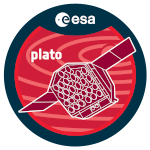Stellar activity remains poorly understood: we need to improve our understanding of spot characteristics (total area, lifetime...), of magnetic cycles and its dependence on the internal structure of stars and more generally the different stellar parameters and their evolution.
We propose to characterize this activity using the signature of the magnetic structures in the light curves of the Kepler mission, in the Fourier domain. For this, we revisit the model of Harvey et al. (1985) in order to take into account all the components present in the power spectra (surface covered by the spots, their lifetime, the transits...). After validating this model with simulated light curves, we present the results from thousands of Kepler light curves of main-sequence stars used by McQuillan (2014). The results show the emergence of different regimes of activity related to rotation period, mass, Rossby number, with very good statistics.
This opens new perspectives for the study of stellar activity in the frame of the future PLATO mission thanks to its capacities in photometric precision and stellar characterization.

 PDF version
PDF version
